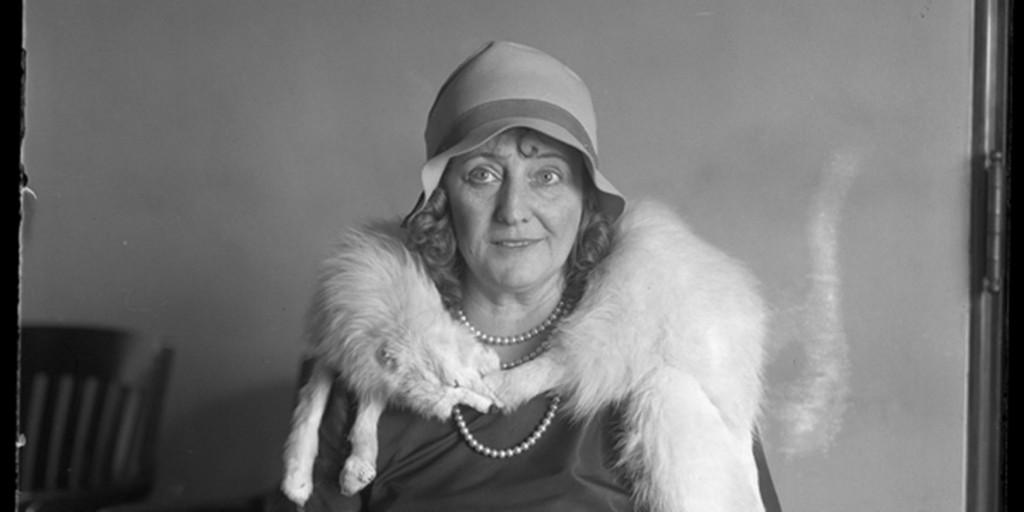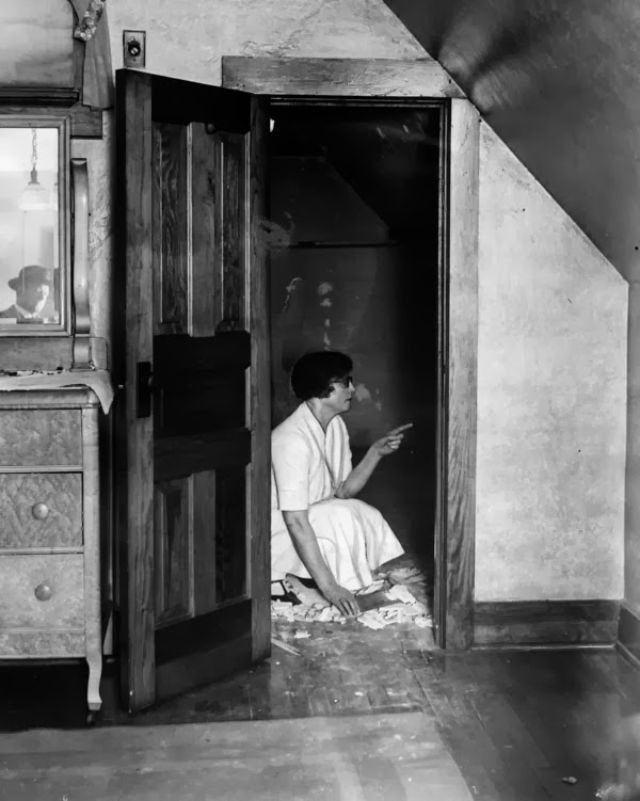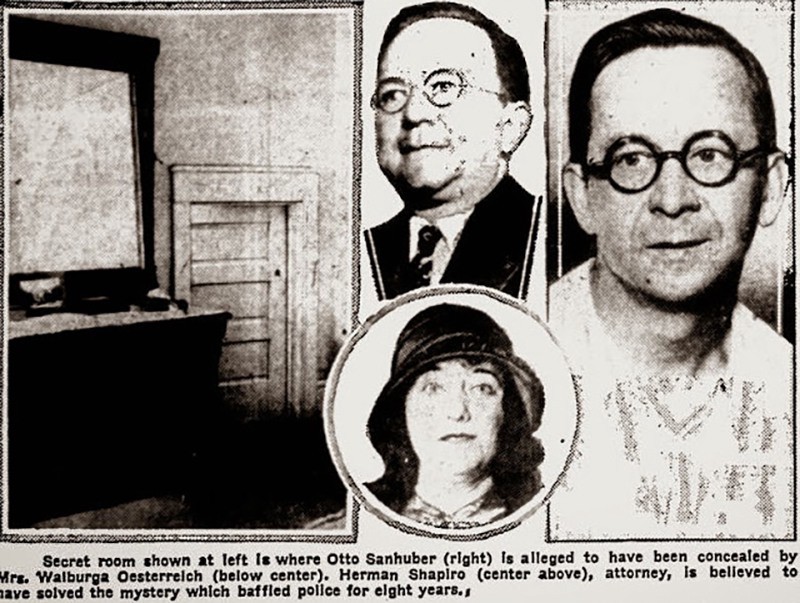The Housewife Who Hid Her Lover In The Attic For Over A Decade

You can’t make this stuff up.
What lengths would you go to keep your affair a secret? For one woman, the sex was so good, she decided to hide her lover in her own house.
In 1930, the LA Times published articles following the wild affairs of Walburga “Dolly” Oesterreich. Dolly married Fred Oesterreich, a wealthy apron manufacturer. From the outside, Dolly’s life was picture perfect. Unfortunately, things were pretty bad behind closed doors. Fred was a violent drinker and Dolly was miserable.
Everything changed for her in 1913.
In a move straight out of “The Graduate,” Dolly seduced her soon-to-be lover upon their first meeting. Bored with her husband (and their sex life), Dolly asked Fred to send a factory worker to their home to repair her sewing machine. When Otto Sanhuber, 19, showed up at the house, Dolly answered the door wearing nothing but a silk robe and tights. Call me crazy, but I think the sewing machine went untouched (if you know what I mean).
Dolly and Otto’s sexual affair would last over a decade. The pair met daily at hotels at the beginning of their relationship. After a while, they moved to the Oesterreich home. Neighbors began to notice and warned Fred of the affair. When confronted, Dolly claimed Otto was her “vagabond half brother.” To quell her husband and neighbors’ suspicions, Dolly came up with a plan: Move her lover into her attic.

Living there, with only a cot and a desk for furniture, wasn’t a far-fetched idea. Otto had no living family members and was a self-proclaimed “sex slave” to Dolly. According to the LA Times, Otto compared his relationship to Dolly to the bond between a mother and son.
Otto spent his time in the attic writing. He published tales of sex and murder under a pen name. Dolly assisted by submitting his stories to pulp magazines.
I know what you’re thinking: “How could Dolly’s husband not have heard this guy up in the attic for so long?” The truth is, Fred did hear noises. After five years, he thought a ghost haunted their home. Fred demanded they move to a new home in Los Angeles. Dolly agreed—as long as the new house had an attic, of course. Otto, upon Dolly’s request, went to Los Angeles early and settled in the new home’s attic before the married couple arrived. In this home, things took a dramatic turn.
In 1922—about 10 years after Otto moved in—a violent fight broke out between the Oesterreiches. Concerned for Dolly’s safety, Otto rushed downstairs with two of Fred’s rifles in hand. When Fred saw Dolly’s “half brother” in their new home, things clicked in his mind. Outraged, he rushed towards Otto, who in turn fired three rounds into Fred’s chest.
With Fred’s blood on their hands, Dolly and Otto thought of a plan: They would fake a robbery. Dolly hid in the closet and Otto locked her inside. He then took Fred’s watch and retreated to the attic. With Otto safely hidden, Dolly screamed for help.
The police believed her. The “stolen” watch validated her robbery claim, leaving them no reason to believe Dolly killed Fred. She decided to make a fresh start and moved to a new home nearby. Otto followed, continuing to live in the attic in order to keep their submissive-dominant relationship a secret.
Dolly then found love with her estate attorney, Herman Shapiro. As a token of her love, she gave Herman the “stolen” diamond watch that once belonged to Fred. Red flags rose for the new lover. Remembering Dolly’s robbery story, Herman asked how she got the watch. She claimed to have found it in a window seat cushion after Fred’s death, saying she didn’t feel the need to alert the police. That evening, she invited her third lover, Roy Klumb, over to dispose of the murder weapons in a tar pit.
In 1923, Dolly and Roy had a nasty breakup, which prompted him to tell the police about the watch and how he hid the guns. The police arrested Dolly, though they remained confused. How was she able to lock herself in the closet?
Because she wouldn’t be home during court hearings, Dolly had asked Herman to bring food to her “half brother,” who was staying in her attic. Excited to see another person for the first time in over 10 years, Otto told Herman all about his sexual affair. Things began to click in Herman’s mind: Otto was the one who helped Dolly kill her husband. Herman kicked Otto out of the house and he fled to Canada.
The court didn’t convict Dolly, and Herman kept Otto’s confession secret. But once Herman and Dolly broke up in 1930, he let the cat out of the bag. Coincidentally, Otto had moved back to Los Angeles. He and Dolly were arrested immediately.

Paparazzi followed the couple as if they were celebrities. The LA Times covered the case in full detail, nicknaming it the “Bat Man” case, a nod to Otto’s cave-like dwelling. Mind you, this was about ten years before the Batman comics were published.
The couple’s zany story blew people’s minds. How could a Midwestern housewife cause a whirlwind of drama and make the front-page news for eight years running?
Unfortunately, the results of the case were not as compelling as the public hoped. The jury found Otto guilty of manslaughter, but the statue of limitations for the offense was only seven years. Because eight years had passed since the crime, Otto and Dolly were free to go.
Dolly ended up marrying a man she had dated for 30 years. Otto ran away from Los Angeles and never came back. The stranger-than-fiction affair inspired two films, including one starring Neil Patrick Harris.
